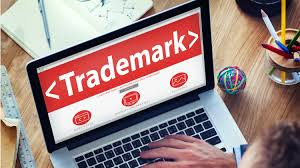Trademark registration follows a very stringent application
procedure in the United States, and is subject to clear legal procedure in
regards to trademark law and brand protection which identify the necessities
that must be fulfilled for a trademark application to be filed. The United
States Patent and Trademark Office is the central authority responsible for
trademarks registered in the United States. Trademarks requiring protection in
other countries must register with the authorities of every country in
question, as U.S. trademark law does not expand to other nations. This post
will talk about the steps for trademarkregistration service, as well as the costs for brand application in the
U.S.
Preparation for trademark
registration
U.S. trademark law has evidently
defined what qualifies a product or service to be registered as a trademark.
Before thinking a trademark application, it is essential to check that the
object of the desired trademark fulfills the criteria of a protected
trademark under the USPTO, as well as to find out whether it is in
conflict with pre-existing brands – that is, brands which have been registered
with the USPTO by a contender already.
Trademark registration
acceptance
The steps for online trademark registration application
and upkeep vary depending on trademark categorization and use. The procedure of
confirming trademark registration goes as follows: USPTO review, Application, registration
certification, mark publication, and registration renewal.
- Application
All applications must be sent via
the Trademark Electronic Application System (TEAS) and have linked
non-refundable fees. The three cost options and their associated requirements
are outlined by the USPTO. Applications can also be filed by mail, even though
the associated fees are much more. Following initial application, it is vital
to monitor the application’s status through the Trademark Status and
Document Retrieval (TSDR) system to avoid missing any time limits. It is
significant to note that payment of application fees does not promise
registration, and that rejected applications will not have their fees reimbursed.
- USPTO review
Applications received by the
USPTO will then be sent to an examining legal representative to confirm that
they have met the entire minimum filing requirements and paid the suitable
application fees. This procedure may take quite a few months, as a complete
review comprises a full examination as well as confirmation that there are no
conflicting marks already registered.
In case of application refusal,
the examining legal representative will issue a letter explaining the reasons
for refusal or any issues with the application. It is then up to the applicant
to reply to the Office action in an appropriate fashion. Applications left un-replied
six months after the mailing date of the Office action are declared discarded.
- Mark publication

No comments:
Post a Comment